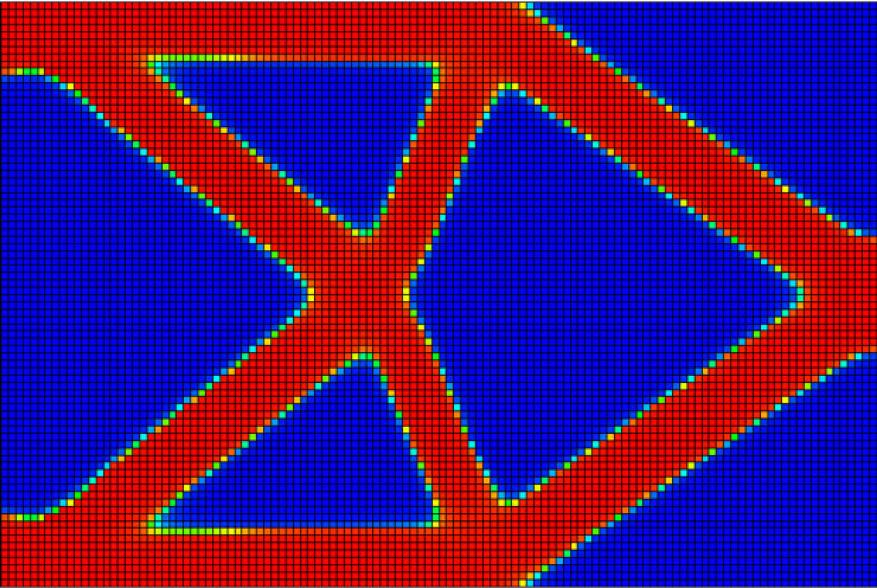Geoffrey Oxberry (16-ERD-025)
Project Description
Additive manufacturing has enabled the development of novel high-performance materials because of a high degree of control over shape and composition at fine-length scales. To design structured materials with novel properties, topology optimization is used to compute the best shape for these materials by optimizing a given objective such as stiffness, subject to given constraints such as mass or volume. We are designing materials by calculating the shape (topology optimization) that gives the optimal performance (e.g., in structural applications or compliance) subject to constraints and manufacturing uncertainty. We are developing the most accurate method to date to overdesign additively manufactured materials to compensate for manufacturing defects and accelerate manufacturing certification. We are employing recently developed, state-of-the-art parallel algorithms to solve problems in topology optimization under uncertainty containing the most accurate characterization of defects to date. Specifically, we are designing methods for topology optimization that can analyze thousands of manufacturing-defect scenarios, and in the process, design for the average of the worst 5 percent of defect scenarios. The target application is electronic multifunctional materials, which have a structural function (load-bearing) and an electromagnetic function (electromagnetic radiation propagated in specified ways, such as cloaking).
We expect to provide a capability to design multifunctional materials in three dimensions under uncertainty using topology optimization by characterizing the uncertainty using a thousand or more representative random samples of manufacturing defects, which is an order of magnitude more samples than achieved in the literature for two-dimensional design. We are developing a topology-optimization code that solves coupled linear elasticity and Helmholtz equations, which applies the technique of separation of variables to reduce the complexity of the analysis, to model both the deformation of the material under load and the propagation of electromagnetic waves of given frequencies through the material. To our knowledge, our approach will be the first to design both structural and electromagnetic properties of these engineered materials. We are developing this method using stochastic programming, an approach accounting for uncertainty by incorporating the statistical distribution of known uncertainties in optimization problems. Recently developed algorithms in stochastic programming and unique parallel computing resources now make this approach possible. The result of this more comprehensive characterization of manufacturing defects could accelerate materials certification efforts, increase materials reliability, and help assess the impact of enhanced manufacturing control strategies.
Mission Relevance
This work—the creation of a design process via a topology-optimization stochastic programming code that accounts for manufacturing variability in multifunctional materials—supports the Laboratory and NNSA mission to develop new, high-performance materials rapidly. Specifically, this process could accelerate the materials certification process by providing statistical guarantees regarding material performance, even in the presence of manufacturing defects. This work, therefore, also supports the Laboratory’s core competency in advanced materials and manufacturing through the use of high-performance computing, simulation, and data science.
FY16 Accomplishments and Results
In FY16 we (1) implemented the forward problem simulations for both structural and electromagnetic properties, (2) implemented an example optimization problem in Ipopt (Interior Point Optimizer software package for large-scale nonlinear optimization) that we intend to use to wrap around these forward problem simulations, (3) completed and validated structural topology optimization software, including a testbed library (see figure), (4) completed the electromagnetic solver, and (5) extended a job offer to a postdoctoral researcher to assist with our project. Building upon the work we did this year, in FY17 we will develop algorithms capable of designing more complex objects, more quickly, at smaller length scales (e.g., smaller cells). We will also add the ability to simulate electromagnetic properties in addition to the structural properties we currently model, so that we can design, for instance, beams that are hard to detect with radar.






